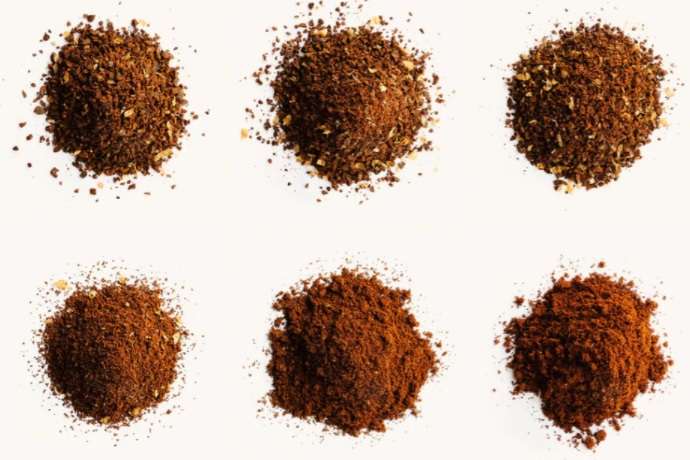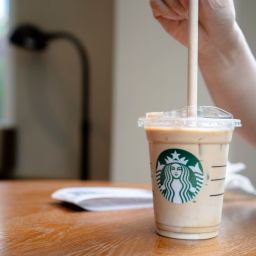
Grind size in coffee brewing is more than just a detail; it’s a crucial element that shapes the entire coffee experience. Think of it as the difference between a finely tailored suit and one that’s off the rack. Both serve the same purpose, but the attention to detail in the former makes all the difference. In coffee brewing, grind size affects everything from flavor to aroma, playing a pivotal role in the brewing process.
The Impact of Grind Size on Coffee Quality
The grind size of your coffee beans can dramatically influence the quality of your brew. Finer grinds, with their increased surface area, make for a more intense extraction, pulling out more flavors and aromas in a shorter time. This is why espresso, with its fine grind, packs such a punch in flavor and aroma. On the flip side, coarser grinds are the go-to for methods like French press or cold brew, where the coffee is steeped for longer, extracting flavor more gently for a balanced cup.
Key Takeaways
- Fine Grinds for Intense Flavor: A finer grind size isn’t just about making your coffee stronger; it’s about maximizing the surface area to extract more flavor and aroma in less time. This is key for espresso lovers seeking that concentrated coffee experience.
- Coarse Grinds for Gentle Brewing: Brewing methods that take their time, like the French press or cold brew, benefit from coarser grinds. The larger particles allow for a slower, more nuanced extraction, resulting in a smooth, well-rounded coffee.
- Consistency is King: The secret to a consistently good cup of coffee lies in the uniformity of your grind size. Irregular grinds lead to uneven extraction, which can mean your coffee tastes a bit off. Consistent grinds mean consistent flavor.
- One Size Does Not Fit All: Just as you wouldn’t wear flip-flops to a snowstorm, you wouldn’t use the same grind size for every brewing method. Each method, from AeroPress to drip, has its ideal grind size that harmonizes with its brewing time and mechanics for the perfect cup.
Grind Size for Various Brewing Methods
Diving into the world of coffee, it’s clear that different brewing methods don’t just prefer, but require, specific grind sizes to unlock their full potential. It’s like picking the right key for a lock; the right grind size can open the door to the perfect cup of coffee.
- Espresso: For the high-pressure world of espresso, a fine grind akin to table salt is essential. This fine grind ensures a quick, intense extraction, capturing the bold flavors and rich aromas espresso is known for.
- French Press: On the other end of the spectrum, the French press loves a coarse grind, about the size of sea salt. This allows for a slow, gentle extraction, yielding a full-bodied coffee that savors every note of the beans.
- Pour-Over: Pour-over methods like the Chemex or V60 prefer a medium-fine grind, which looks a bit like granulated sugar. This grind size balances resistance to water flow with surface area for extraction, aiming for a bright, nuanced cup.
- Cold Brew: For cold brew, the coarsest grind of all is ideal, allowing for an extended steeping time without over-extracting, resulting in a smooth, mellow drink that’s easy on the acidity.
The Science Behind Extraction and Grind Size
Extraction is the heart of coffee brewing, where water pulls flavors, oils, and aromas from the coffee grounds. The grind size plays a pivotal role in this process, acting as a regulator for how much flavor is extracted.
Under-Extraction: When coffee is ground too coarsely for the chosen method, water flows through too quickly, resulting in under-extraction. The coffee may taste weak, sour, or underdeveloped because the water hasn’t had enough contact time to pull out the full spectrum of flavors.
Over-Extraction: Conversely, a grind that’s too fine can lead to over-extraction. Here, the water lingers too long, pulling out too much from the coffee, including undesirable bitter and astringent flavors. This results in a brew that’s too strong, sometimes even bitter.
Finding Balance: The trick is to find the sweet spot where the grind size matches the brewing time and method, allowing water to extract the flavors that make coffee so beloved without tipping into the realms of under or over-extraction.
Achieving the Perfect Grind Size
Nailing the perfect grind size is akin to finding the right pressure point in a massage: it’s all about precision and technique. One key player in this pursuit is the grinder itself. Burr grinders, unlike their blade counterparts, offer a level of consistency blade grinders can only dream of. Why? Burr grinders crush beans between two surfaces, providing a uniform grind at the setting of your choice. Blade grinders, on the other hand, chop at beans, often resulting in a mix of fine dust and chunky bits. For a coffee that sings rather than squawks, investing in a burr grinder is stepping towards that harmony.
Experimenting with Grind Size
Coffee brewing is not just science; it’s art, alchemy, and a dash of personal magic. The same bean, grind, and brewing method can yield different tastes in different hands. That’s why experimenting with grind size can turn a morning routine into a voyage of discovery. Small tweaks to your grind can unveil new spectrums of flavor. Think of it as tuning an instrument: subtle adjustments can bring a melody to life.
Start with a recommended grind size for your brewing method, then adjust slightly finer or coarser next time. Take notes on your taste adventures—a coffee journal can be your map to buried treasure. Finding your perfect brew is a journey, and each cup is a step along the path. Enjoy the ride, and let your taste buds lead the way.
FAQs
Does grind size affect coffee strength?
Absolutely! A finer grind increases the surface area exposed to water, enhancing extraction. This means more flavors and compounds get into your cup, often resulting in a stronger taste. However, strength also depends on other factors like brewing time and coffee-to-water ratio.
How does grind size relate to brewing time?
It’s all about balance. Finer grinds mean quicker extraction but require shorter brewing times to avoid bitterness. Coarser grinds are the opposite; they’re best for longer brews like cold brew or French press, ensuring a smooth, rich flavor without over-extraction.
Choosing the right grinder: Burr or Blade?
Burr grinders are the way to go for consistency and control. They grind coffee beans to a uniform size, allowing for a more predictable flavor extraction. Blade grinders can create uneven grinds, making it harder to achieve the perfect cup.
Final Thoughts
Grind size is the unsung hero of the coffee world, a critical factor that can make or break your brew. It’s not just about fine versus coarse; it’s about matching the grind to your preferred brewing method for that ideal cup. Remember, coffee brewing is as much an art as it is a science. Don’t be afraid to experiment with different grind sizes to discover what tastes best to you. Whether you’re pressing a French press, pouring over, or dialing in your espresso, a little adjustment can lead to your next great coffee experience.









